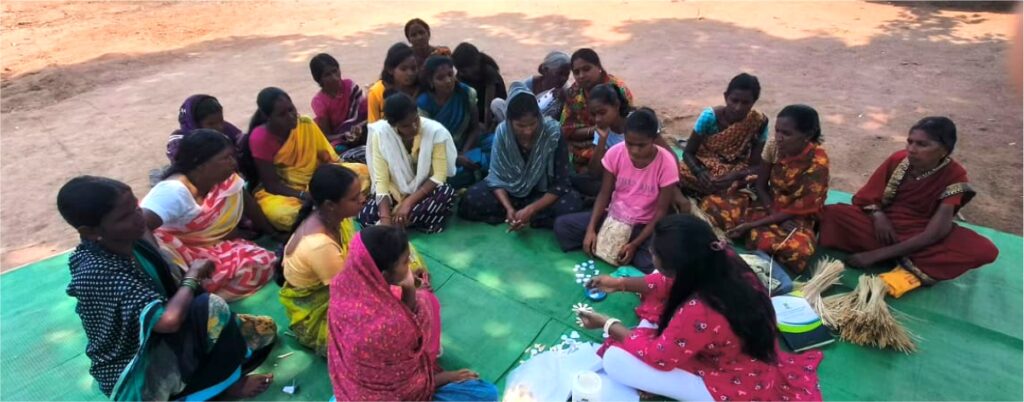From the CPO's Desk
Ethnobotany of Key Plant Resources Among the Forest Dependent Tribal Communities of Gadchiroli Region

The south-eastern part of Vidarbha (Gadchiroli and Chandrapur region), is heavily forested and largely tribal, where ‘ethno-botany’ plays a crucial role in understanding the interaction between forest-dependent tribal communities (Gond, Madia etc.) and their surrounding environment. These communities rely on forests, not only for subsistence but also for cultural and medicinal purposes. The rich biodiversity of the region provides an invaluable resource base, making plants central to their livelihoods, healthcare, and traditions. Some key aspects of ethno-botany of important plant resources in the context of local tribal communities include, edible plants and forest produces, medicinal plants, fibre and construction materials, cultural and ritualistic plants etc.
Selected and commonly available plants with ethno-botanical relevance under each categories are as follows :
Edible Plants and Forest Produces →
Madhuca longifolia (Mahua): The flowers are a key source of food and are used to make local beverages. The oil extracted from the seeds is used for cooking and in cosmetics.
Dioscorea spp. (Wild Yams): An essential food source during times of scarcity, wild yams are gathered from the forest by many local tribal communities.
Tamarindus indica (Tamarind): Tamarind trees provide fruits that are used as a souring agent in food and also for medicinal purposes, particularly in digestive health.
Syzygium cumini (Jamun): The fruit is consumed for its nutritional and medicinal properties, especially in managing diabetes. Jamun trees are valued for their fruits and their potential medicinal benefits.
Phyllanthus emblica (Amla): The fruit is rich in Vitamin C and is used in dietary supplements, herbal medicines, and for preserving food. Amla is widely used for its health benefits and forms a part of traditional medicine and food preservation practices.
Diospyros melanoxylon (Tendu): Tendu leaves are used to make beedis (traditional Indian cigarettes), which is a major source of income for forest dwellers. Economically important due to the beedi industry; also used for its fruits and wood.
Medicinal Plants →
Terminalia arjuna (Arjun tree): Known for its cardio-protective properties, the bark is used in traditional medicine to treat heart conditions.
Tinospora cordifolia (Guduchi): Often used to boost immunity and treat fever, this plant is an important part of Ayurvedic and tribal medicine.
Azadirachta indica (Neem): Used in the treatment of fever, headache, ulcers, respiratory disorders, cancer, diabetes, leprosy, malaria, dengue fever, chickenpox, and skin complications.
Andrographis paniculata (Kalmegh): Used in the treatment of fever, liver disorders, and respiratory infections, it holds a significant place in local health practices.
Fiber and Construction Materials →
Bamboo: Used for constructing houses, crafting baskets, and making other utility items. Bamboo also serves as an important material in making tools and everyday items like mats and fences.
Tectona grandis (Sogun tree): While the wood is used for construction and fuel and the tree has medicinal properties.
Cultural and Ritualistic Plants →
Butea monosperma (Palash): This tree has spiritual significance in many tribal rituals. Its bright orange flowers are used in religious ceremonies, while the bark, seeds, and leaves are used in traditional medicine.
Ficus religiosa (Peepal tree): The Peepal tree holds sacred importance, and its leaves and bark are often used in rituals and local healing practices.
Sustainability and Conservation Practices
Sustainable practices adopted over generations of the forest dependent tribal communities i have ensured the continuous availability of these plant resources n Gadchiroli. Their deep understanding and indigenous knowledge of the forest ecosystem allows them to harvest plants without depleting the natural resources. Practices such as rotational harvesting, seed preservation, and selective cutting ensure that the forest regenerates and remains a viable source of livelihood.
Threats and Conservation Needs
While the ethnobotanical knowledge of these communities is invaluable, modern challenges like deforestation, extensive mining in recent years, and changing climate patterns threaten both the biodiversity and the tribal way of life. There is a growing need for initiatives to document and preserve traditional knowledge, promote sustainable resource management, and involve tribal communities in conservation efforts.
STRC, Gondwana University, through its herbal plant initiatives, has been engaged in scientific documentation of indigenous medicinal knowledge and treatment processes adopted by local traditional healers. STRC has also developed a directory of traditional healers and a checklist for over 300 important locally available plant species. Gondwana University through its Ekal Gramsabha initiative, is engaged in capacity building of local tribal communities with regard to sustainable resource utilization and income generation. Incorporating ethnobotany into eco-tourism initiatives in Gadchiroli could further enhance the engagement of local communities while promoting the sustainable use of plant resources, as their rich traditional knowledge and interaction with the forest could be central to educational programs, nature trails, and cultural experiences for visitors.






